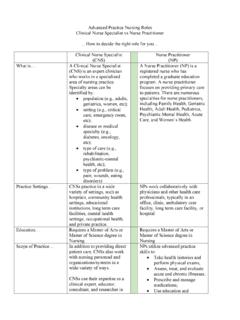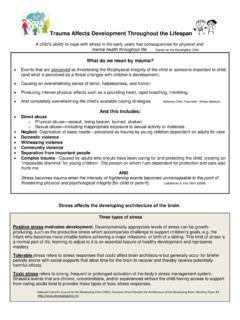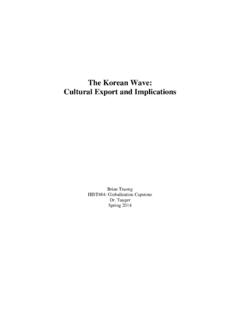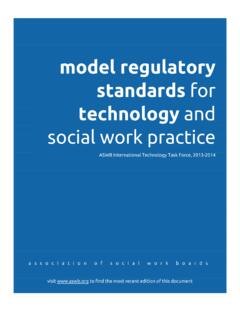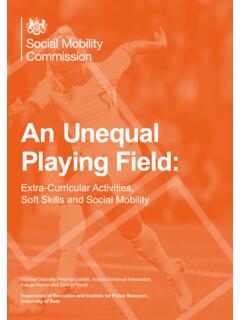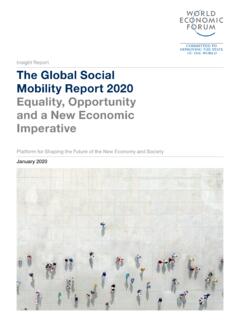Transcription of The Concept of Community in Social Work Practice
1 944 The Concept of Community in Social work Practice As we neared the end of the twentieth century, the rich were richer, the poor, poorer. And people everywhere now had a lot less lint, thanks to the lint rollers made in my hometown. It was truly the dawn of a new era. Michael Moore, American fi lm maker, writer Th is is the duty of our generation as we enter the twenty-fi rst century solidarity with the weak, the persecuted, the lonely, the sick, and those in despair. It is expressed by the desire to give a noble and humanizing meaning to a Community in which all members will defi ne themselves not by their own identity but by that of others. Elie Wiesel, writer, political activist, Nobel laureate Th e American city should be a collection of communities where every member has a right to belong. It should be a place where every man feels safe on his streets and in the house of his friends. It should be a place where each individual s dignity and self-respect is strengthened by the respect and aff ection of his neighbors.
2 It should be a place where each of us can fi nd the satisfaction and warmth which comes from being a member of the Community of man. Lyndon B. Johnson, 36th president of the United States We all have a mental image of Community . Fraught with personal meaning, the word com-munity conjures up memories of places where we grew up, where we now live and work , physi-cal structures and spaces cities, towns, neigh-borhoods, buildings, stores, roads, streets. It calls up memories of people and relationships families, friends and neighbors, organizations, associations of all kinds: congregations, PTAs, clubs, congregations, teams, neighborhood groups, town meetings, and even virtual com-munities experienced through chat rooms. It evokes special events and rituals Fourth of July fi reworks, weddings, funerals, parades, and the fi rst day of school. It stirs up sounds and smells and feelings warmth, companionship, nostalgia, and sometimes fear, anxiety, and confl ict as well.
3 We all grew up somewhere; we all live in Copyright 2011. Oxford University Press. All rights reserved. May not be reproduced in any form without permission from the publisher, except fair uses permitted under orapplicable copyright Publishing : eBook Collection (EBSCO host) - printed on 9/9/2015 2:45 PM via COLLEGE OF ST SCHOLASTICAAN: 357093 ; Hardcastle, David A., Powers, Patricia R., Wenocur, Stanley.; Community Practice : Theoriesand Skills for Social WorkersAccount: s8889607 The Concept of Community in Social work Practice95communities somewhere; we all desire human associations, some degree of belonging to a human Community ; we all carry around some sense of Community and communities of memory within us. It goes deep into our souls. But it is hard to imagine a more elusive con-cept than the idea of Community . Its elusiveness comes from its multidimensionality. Cohen ( 1985 ), as cited in Chapter 1, found 90 diff erent defi nitions of Community in the 1985 Social sci-ence literature.
4 Community means a lot and it means diff erent things, from the romantic and mystical to the mundane. Bellah and his col-leagues defi ne a Community as a group of people who are socially interdependent, who participate together in discussion and decision making, and who share certain practices that both defi ne the Community and are nurtured by it (Bellah, Madsen, Sullivan, Swidler, & Tipton, 1985 , p. 333). Cohen s ( 1985 ) conception of commu-nity has emotional charging, personal identifi ca-tion, and symbolic construction by people. Resting on its meaning, Community is a system of values, norms, and moral codes which pro-voke a sense of identity to its members.. Structures do not .. create meaning for people.. [Without meaning] many of the organiza-tions designed to create ` Community as pallia-tive to anomie and alienation are doomed to failure (p.)
5 9). Community , therefore, is where one learns and continues to Practice how to be Social (p. 15). Th e British Columbia Ministry of Children and Family Development ( 2003 ), fol-lowing Mattessich and Monsey ( 1997 ), defi ne Community more dryly as people who live within a geographically defi ned area and who have Social and psychological ties with each other and with the place where they live. Berry ( 1996 ) argued that Community has no value that is economically or practically benefi cial. Th e rea-soning is that if something can t be assigned an economic value, it serves no purpose. We take a less neoliberal economic position and argue that communities have consummate value. We have adopted Fellin s ( 2001 ) formal defi nition of communities as Social units with one or more of the following three dimensions: 1. a functional spatial unit meeting sustenance needs 2.
6 A unit of patterned interaction 3. a symbolic unit of collective identifi cation (p. 1) We also borrow from Willie, Willard, and Ridini ( 2008 ) with our concern for horizontal and vertical Community linkages and the nature of the institutional interactions. Th is conception of Community is compatible with that used by other Community Practice authorities (Butcher, Banks, & Henderson with Robertson, 2007 ; Delgado & Staples, 2008 ; Hardina, 2002 ) and has the value of recognizing the spatial, interactional, and emotional compo-nents of Community . Th is chapter establishes the basic concepts, variables, and changes related to Community life. Th e following two chapters examine methodolo-gies of studying communities and methods for hearing Community concerns. To change com-munity, its parts, processes, and particularities must be understood.
7 Th e common elements in sociological defi ni-tions of Community are geographic area, Social interaction, common ties, and shared senti-ments. While connection to a territorial base is common with neighborhoods, villages, or cities fi tting the defi nition, functional and cultural communities or communities of interest with-out clear geographic bases (such as the Social work Community , the Chicano Community , the gay and lesbian communities) are also included. Spatial units with clearly defi ned geographic boundaries are seemingly becoming less impor-tant to a sense of Community because rapid elec-tronic communication technology enables virtual communities and ease of physical mobil-ity. We can be connected to several communities of interest because we are geographically mobile and increasingly tied together though electronic and other media. We can interact globally on collective interests.
8 As Social workers, we need to understand that our clients belong to multiple communities of identity. Communities provide people with rich Social and personal lives. Th ey shape the way we think and act. Th ey surround us with values and norms of behavior, explicit laws, and unwritten rules of conduct. Th ey furnish us with meanings and interpretations of reality and assumptions about the world. Th ey provide resources and opportu-nities, albeit highly unevenly places to work , to Copyright 2011. Oxford University Press. All rights reserved. May not be reproduced in any form without permission from the publisher, except fair uses permitted under orapplicable copyright Publishing : eBook Collection (EBSCO host) - printed on 9/9/2015 2:45 PM via COLLEGE OF ST SCHOLASTICAAN: 357093 ; Hardcastle, David A., Powers, Patricia R., Wenocur, Stanley.; Community Practice : Theoriesand Skills for Social WorkersAccount: s8889607 Understanding the Social Environment and Social Interaction96learn, to grow, to buy and sell, to worship, to hang out, to fi nd diversion and respite, to care and be cared for.
9 Th ey confront us with challenges, problems, and traumas; they intrude on our lives, and they hold out the possibilities for solutions. Communities are where we live our lives. Th e Social work ecological model s emphasis on person-in-environment places communities as objects of Social work intervention as much as individuals, families, and groups. Social workers can build competent communities. A competent Community , according to Fellin ( 2001 ), is a com-munity that has the ability to respond to the wide range of member needs and solve its prob-lems and challenges of daily living (p. 70). Community competence is enhanced when resi-dents have (a) a commitment to their commu-nity, (b) self-awareness of their shared values and interests, (c) openness in communication, (d) wide participation in Community decision making, and (e) a sense of collective self-effi cacy and empowerment. Basic Community Concepts Community , Neighborhood, and Public Life Community empowerment, Community control, and Community partnership abound in political and policy discussions.
10 Community and grass-roots have a salient kind of Social currency. Th ey are buzzwords in politics and ideologies of the left and right. By grassroots , we mean a bot-tom-up approach, starting with the people who live in a geographic and Social Community . Community and neighborhood are sometimes used interchangeably to mean a local area ( , a section of a city or a county, where many resi-dents develop a shared worldview). Residents can unite as indignant utility ratepayers or exu-berant sports fans in ways that can facilitate shared Community identity and action tran-scending deep diff erences. Community suggests people with Social ties sharing an identity and a Social system, at least partially, while neighborhood suggests places that are grounded in regional life where face-to-face relationships are possible. See Fellin ( 1995 , 2001 ) for an in-depth discussion and defi nition of Community and neighborhood.
